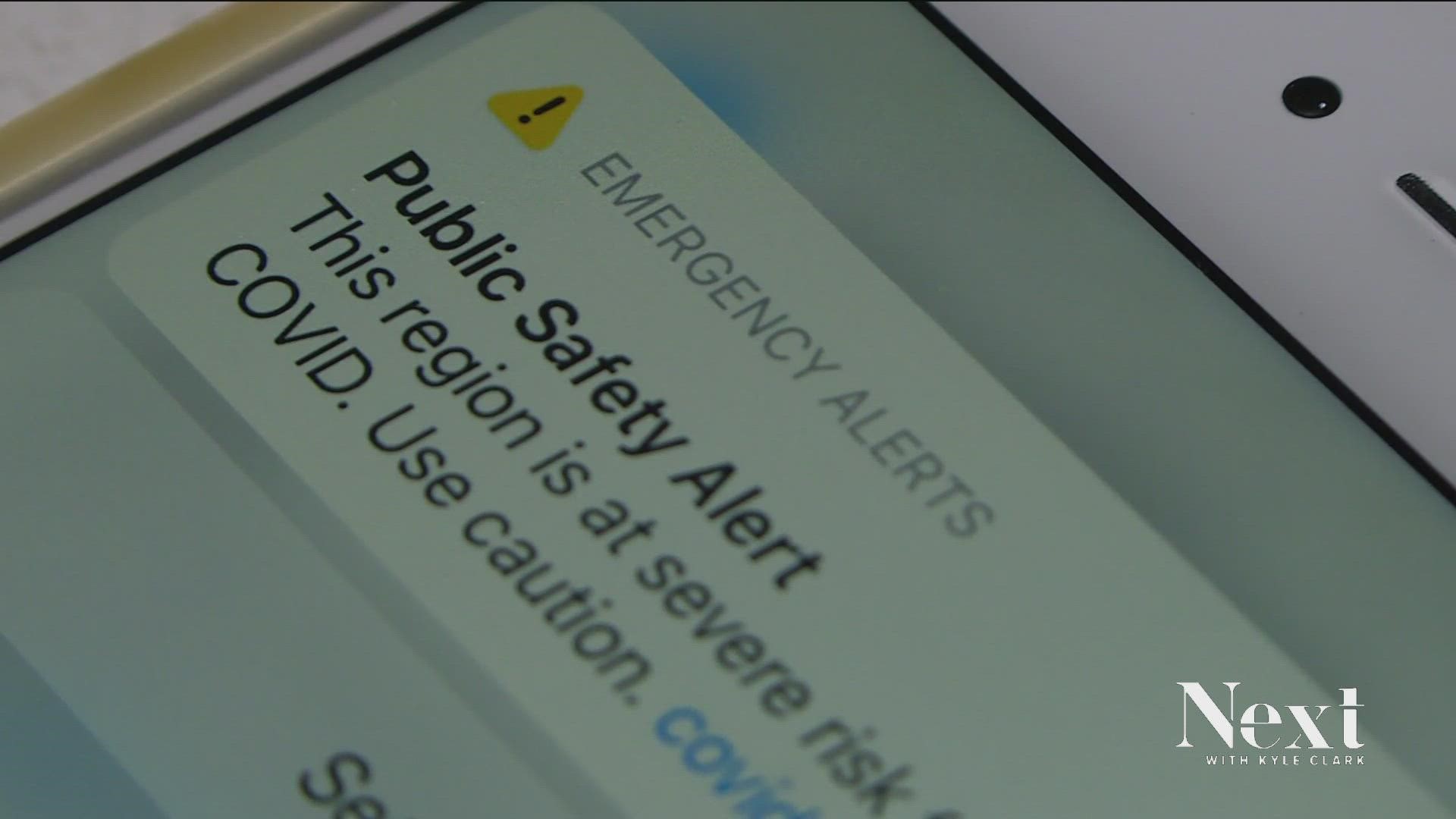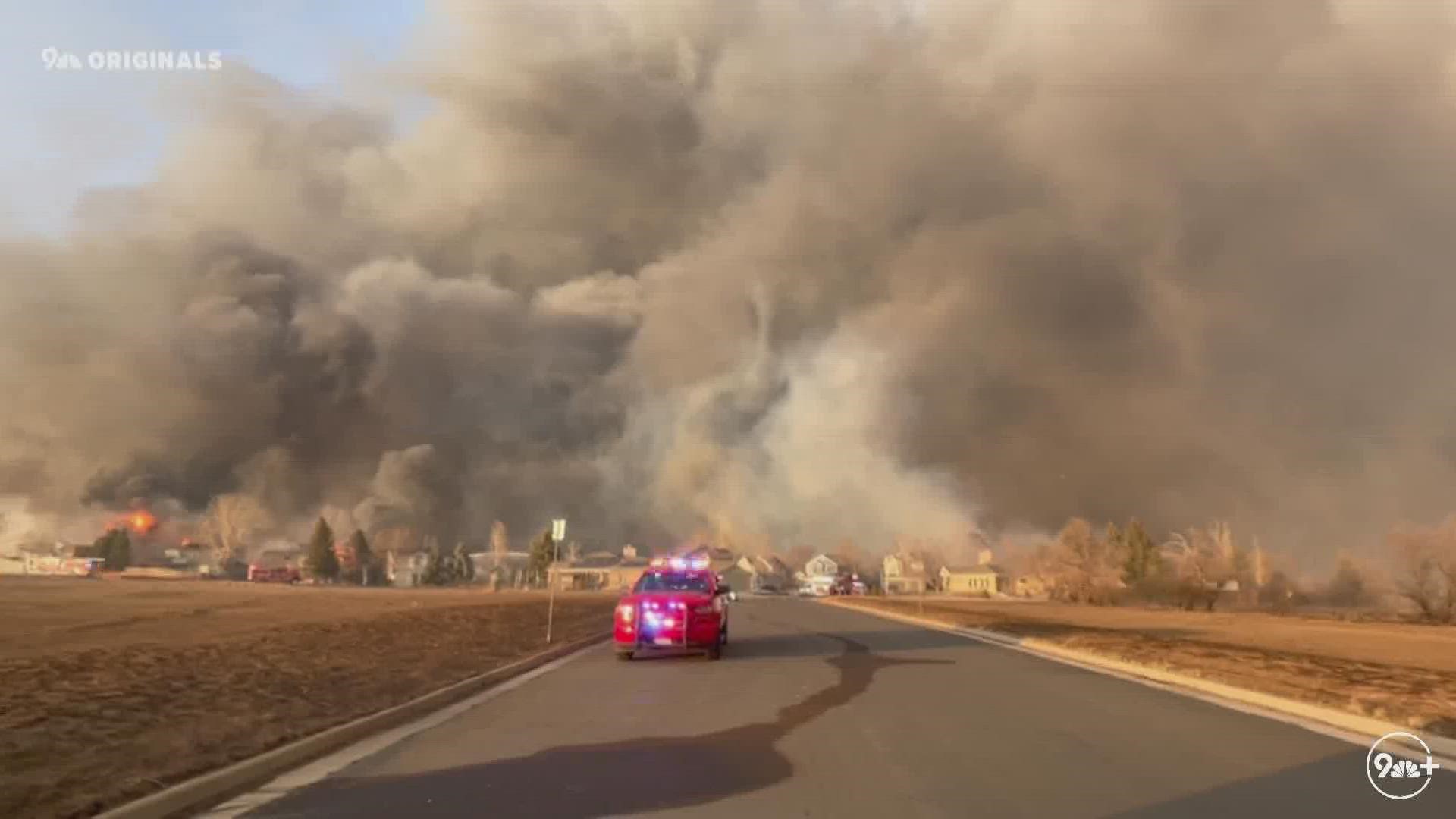Emergency alert systems used inconsistently across Colorado counties
A patchwork of opt-in systems and WEA cellphone emergency alerts across Colorado means some people aren't warned in a disaster, as the Marshall Fire showed.
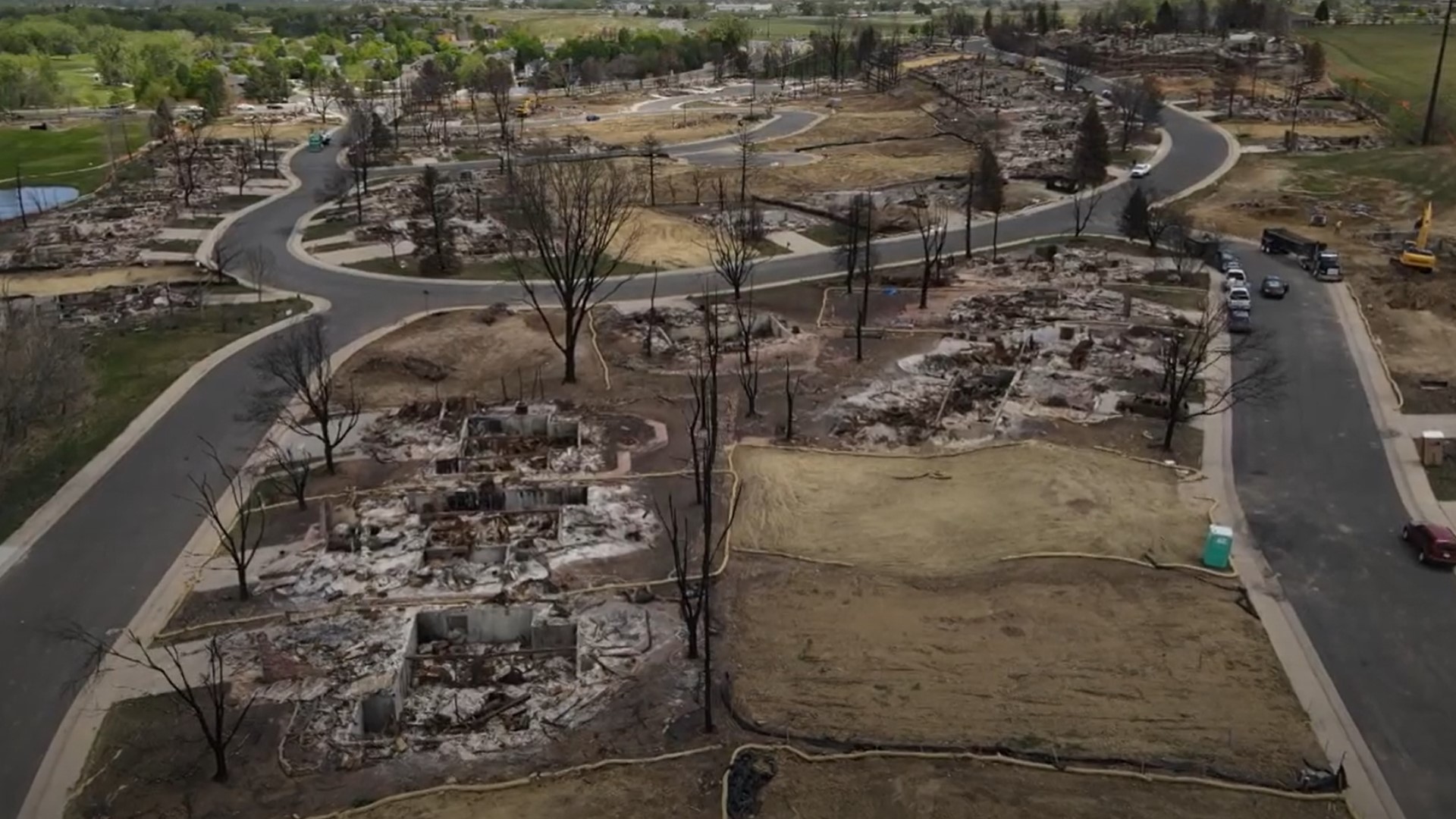
Chapter 1 The day of the fire
On the day of the Marshall Fire last December, neighbors in the Coal Creek Ranch neighborhood waited for an alert that it was time to go. For many of them, no alert ever came.
Chris and Jane Fuller monitored social media from their home on St. Andrews Lane, but nothing told them they should leave. Until Chris looked out the window.
“Up the street, there were flames coming for our house, or behind a house six or seven houses up,” Jane Fuller said. “At that point, it was panic.”
On nearby Turnberry Circle, Carol Rayle and her husband were glued to the TV but saw nothing about a need to evacuate. Then a neighbor called – the golf course across the street from her home was on fire and they needed to get out immediately.
In the rush to leave, the Rayles couldn’t corral their kitten, which died in the fire.
“By the time we left … I could see the flames on the golf course,” Rayle said. “Our neighbor’s house across the street was engulfed in flames. We were driving through smoke to a point it was difficult to drive. And all we started doing is driving away from the smoke. We had no idea where we were going.”
Jerolyn Ochs, who also lived on Turnberry Circle, had just returned home from a hike. Her neighbor’s fence was on fire. She went to get a hose to put that fire out and realized the fire was also in her living room.
“It started grabbing a hold of pieces of my furniture in my living room and melted my blinds,” Ochs said. “My blinds just literally melted.”
“When (my husband) opened the garage door, the flames came under my car and literally singed the top of my sneaker,” she said.
RELATED: Text messages between city leaders show delay, confusion with Marshall Fire evacuation alerts

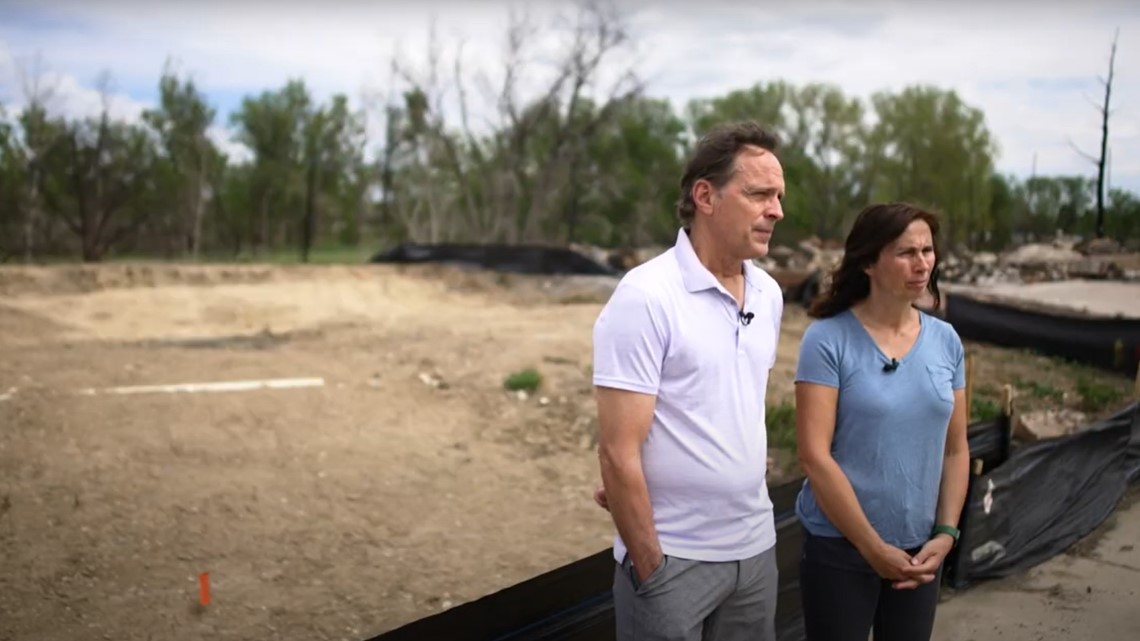
The Fullers, Rayles and Ochs expected to get some kind of notice about the fire and the threat to their homes, whether that came from the warning sirens outside their neighborhood, calls to their landlines or messages on their cellphones.
After all, if our phones let us to order food and track the delivery driver’s journey, shouldn’t they convey a message in a life-threatening emergency?
All three families should have received an alert to leave their homes at 1:08 p.m., when Boulder County sent out an evacuation order. None of them received that warning because they hadn’t signed up for the county’s opt-in emergency alert system, known as Everbridge.
Chapter 2 An incomplete toolbox


For the Marshall Fire, Boulder County was missing a tool that the federal government calls “an essential part of America’s emergency preparedness.”
The system, known as the Integrated Public Alert and Warning System (IPAWS) allows first responders to send Wireless Emergency Alerts (WEA) – messages to all cellphones in a certain geographic area, most commonly used for Amber Alerts.
Boulder County had applied for and was granted access to IPAWS in August 2019 but wasn’t using it at the time of the Marshall Fire, nearly two and a half years later.
“Would we have liked to have been done quicker, no doubt,” said Mike Chard, director of Boulder County’s Office of Emergency Management.
“It’s important that these tools are used the right way and that the people have the right training and capacity to do it and they’re done in a way that can serve that sort of strategic evacuation environment,” he said.
Chard said his office had to create protocols for how to use the system, which took longer than expected in large part due to ongoing disasters in the county and the COVID-19 pandemic.
“We hit COVID, and we were in operational response to COVID, so the priority was dealing with saving lives in the county,” he said. “If we would’ve known that [the Marshall Fire] was gonna hit by [Dec. 30], obviously there could’ve been some reprioritization of it.”
> Scroll over the map below for information on how to opt-in to emergency alerts in every Colorado county:
Along with deputies going door-to-door to evacuate people, Boulder County used an opt-in alert system called Everbridge. That system should automatically reach all landline phones. But to reach cellphones, users had to create an account tied to an address.
On the day of the Marshall Fire, only 24% of the county’s population had opted-in a cellphone.
After-action reports on Everbridge during the Marshall Fire showed only 1 in 5 people who were sent alerts confirmed that they received them, which usually involves pressing a number on a phone or clicking a link provided in an email or text message alert.
RELATED: Marshall Fire after-action report lists dozens of recommendations to help prepare for next emergency
“The system worked the way it’s intended to work,” Chard said. “Does it reach everybody because it’s opt in? … The answer is no.
“No system is 100% effective,” he said. “That’s why it has to be a multi-prong approach when you’re dealing with these evacuation environments as best as you can.”
Boulder County finished setting up IPAWS in April, which Chard said was the plan all along.
> Video below: Watch the full raw interview with Mike Chard:
Chapter 3 Patchwork of alert systems
Data from the Colorado Division of Homeland Security and Emergency Management (DHSEM) show 15 counties aren’t prepared to use IPAWS on their own.
Ten of those counties don’t have agreements to use the system with the Federal Emergency Management Agency (FEMA). The five others are currently working to get IPAWS operational.
Reasons for not implementing IPAWS in those Colorado counties vary. Some emergency managers told 9News that their opt-in alerting systems work fine.
> Scroll over the map below to find out which Colorado counties do and don't use IPAWS:
In Phillips County in northeast Colorado, which hasn’t applied to use IPAWS, Emergency Manager Broc Pelle said that 90% of residents opted-in to the county’s optional alert system, which he said works well.
“As a county, we are continuing to seek information in relation to IPAWS and will implement the system if it proves to be the best option,” Pelle wrote in an email.
Other counties, like Bent County in southeast Colorado, said resources are an issue. Emergency Manager Troy Abdulla said he has a sticky note on his computer with “IPAWS” written on it – reminding him to work on FEMA training for the program whenever he has a free moment. As the only person in his department, he rarely does.
> Watch: 15 counties in Colorado still can't send out lifesaving alerts in situations like wildfires
Bent, which has yet to apply for IPAWS, uses a system called Swift 911. Until this year, residents had to fill out a form and return it to the county office to opt-in to receive alerts, Abdulla said. During an emergency, he noticed that not many people were registered, so he asked county commissioners to post his cellphone number so residents could call him to sign up.
“I think there are some challenges for smaller communities,” said DHSEM Director Kevin Klein. “Especially when we get into frontier areas of the state where you don't have a big tourist population, you may have one cell tower, you may have very limited communications anyway, so I think that's challenging,”
DHSEM set a goal date of the end of next year to have all Colorado communities able to send WEA alerts. The department can help county departments with staffing if resources are slim and encourage counties that might be skeptical about using the program.
“I would say that [WEA] is one of the tools that you need in your toolbox, so not only the WEA alerts … also individual programs a county dispatch center may have,” Klein said.
Chapter 4 Lessons from California

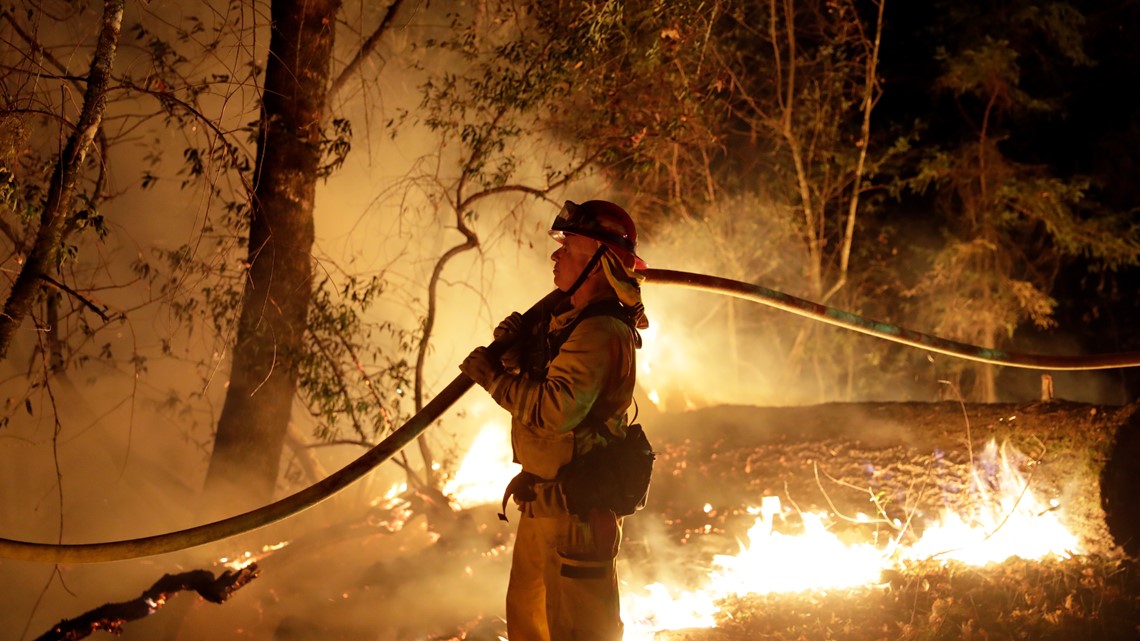
In the early hours of Oct. 9, 2017, Jessica Tunis watched a growing orange glow above the foothills near her home in Santa Rosa, Calif. The Tubbs Fire had started a few hours earlier and was fueled by unusually strong winds.
Tunis, who worked at a senior housing facility, stayed awake overnight in case her residents needed to evacuate.
As the glow grew and the wind picked up, Tunis kept trying to call her mother, Linda, who lived on the other side of town in a mobile home retirement community called Journey’s End. Her mother didn’t answer. Tunis believed she’d turned her ringer off.
“I’ll never really get over this, but I’m the one who taught her how to silence her phone because she would like to take naps and people would call and bother her while she was taking naps,” she said. ”So I taught her how to silence her phone, and I couldn’t get through to her.”
“Around 2:30, I hear the fire is at K-Mart,” Tunis said. “And I just freak out because my mother does not live far from K-Mart. And I had already tried to call her numerous times.”

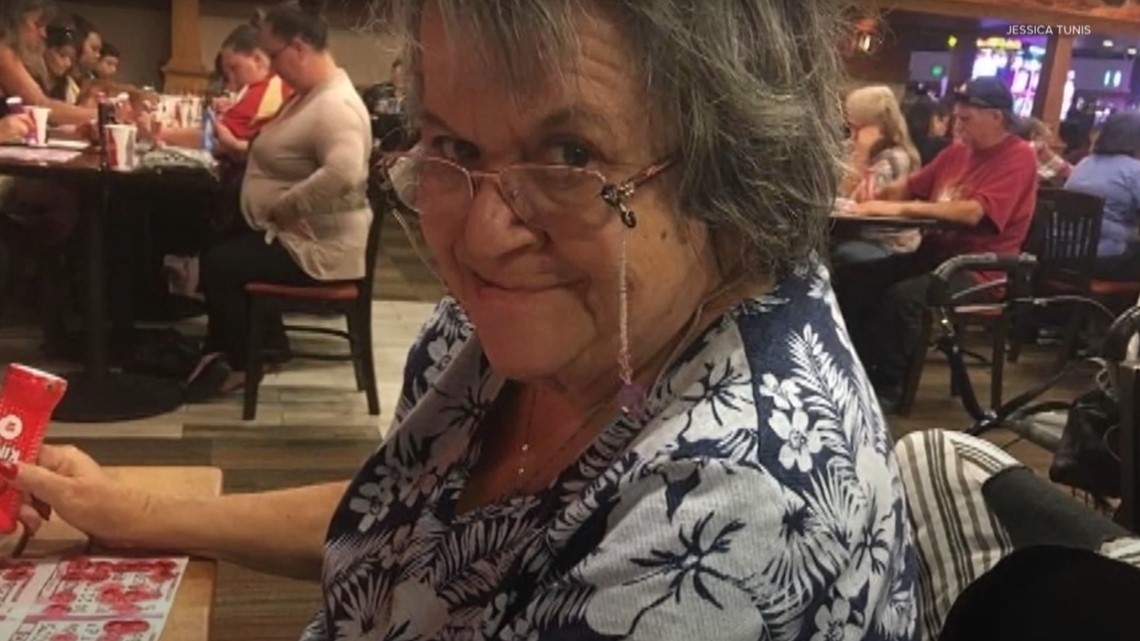
Despite the fire’s close proximity to Journey’s End, Tunis said she still hadn’t heard about an evacuation order for her mom’s neighborhood. Then at 3:42 a.m., her mother finally called her.
“I just say, ‘Mom, I’ve been trying to reach you. There’s a big fire,’ ” she said. “I don’t even know how I got that sentence out without her screaming. She’s like, ‘My house is on fire. My house is on fire.’ I’m like what? Does not compute. There’s no evacuation notice for your neighborhood. You’ve got to get out.”
Tunis hung up with her mother to call 911. In a recording of that call, Tunis’ partner is heard telling the dispatcher about Linda Tunis’ situation. The dispatcher says there isn’t much that overwhelmed first responders can do.
Tunis called her mother back.
“I said, ‘Mom, you’ve got to do something,’ ” she said. “‘ You’ve got to get to a window. You’ve got to jump. Do something.’ I’m begging her, begging her to jump out of the house, and I remember … I don’t know … I reverted to a child. I just started telling her, ‘I love you, Mommy. I love you, Mommy.’ I hadn’t called her mommy since I was 10. I just started saying that over and over again because I realized this is probably the last moment I’m going to get to talk to her.
“I just said ‘I love you, Mommy.’ A lot of times. And then she screamed and then the phone went dead.”
For months, she couldn’t get that call out of her mind.
“It was like a puzzle,” she said. “My brain was like, if I can just figure this out, it was like she would come back to life. It was like this magical thinking, if I could just figure out I could save her.”
Sonoma County had access to IPAWS and could have sent a Wireless Emergency Alert to people who needed to evacuate. During the Tubbs Fire, emergency officials decided not to. Twenty-two people were killed and 5,000 homes were destroyed.
“People were furious, absolutely furious, that a fire, a humongous fire was coming toward their house and they were asleep and they had no idea,” Tunis said. “Like what the heck.”

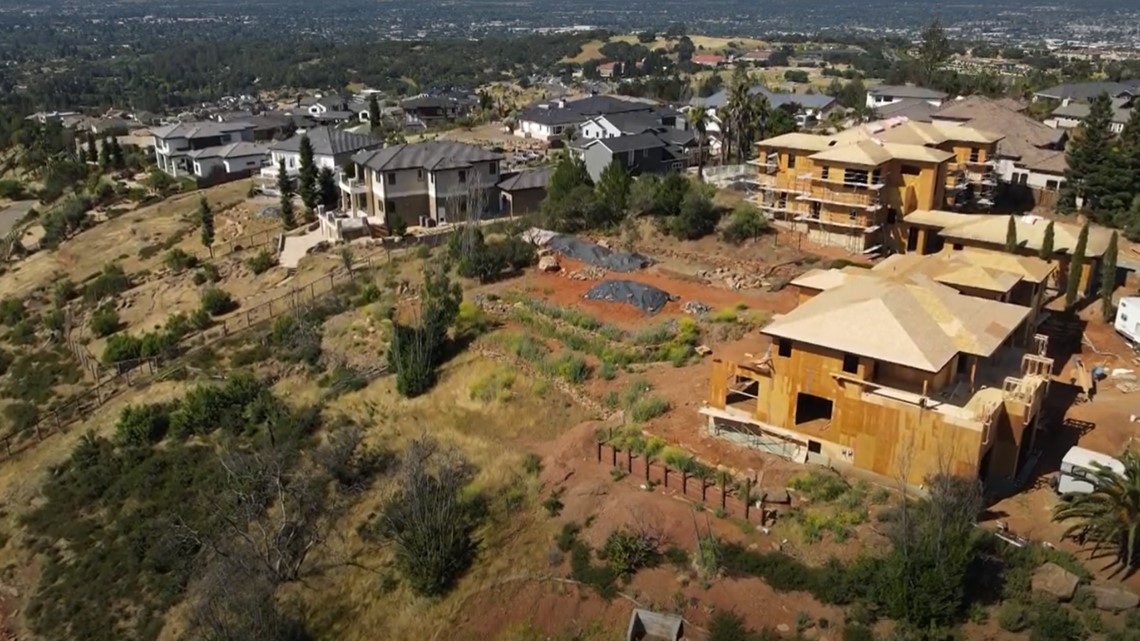
After the failure of alerting during the Tubbs Fire, Sonoma County brought in a new emergency manager, Chris Godley, with the goal of fixing the alerting problems.
“At that point in time, WEA was essentially an untested system,” Godley said. “So they elected not to use the WEA system during that warning event.
“But the public's response to that failure to use that system or the decision not to use the system was significant,” he said. “There was significant public criticism of that decision, and that's what drove a large part of what's happened since.”
Since Godley took over the Sonoma County Office of Emergency Management, he has added more staff, including two employees specifically devoted to alerting.
“The public demands a level of service that's not been seen before,” he said. “In order to deliver that service, you're going to need to commit resources and develop a full-fledged program that'll give people the ability to get timely information accurately on the device of their choice.”
The county has seen four major destructive fires since the Tubbs Fire and has sent about three dozen Wireless Emergency Alerts. No one has died.
“It was certainly a lesson for us,” Godley said, “We needed to invest more to deliver better and more responsive service to our community in terms of alert and warning. I hope that other emergency managers have seen what's occurred not just here in Sonoma County but up in the Camp Fire, your own experiences in Colorado.”

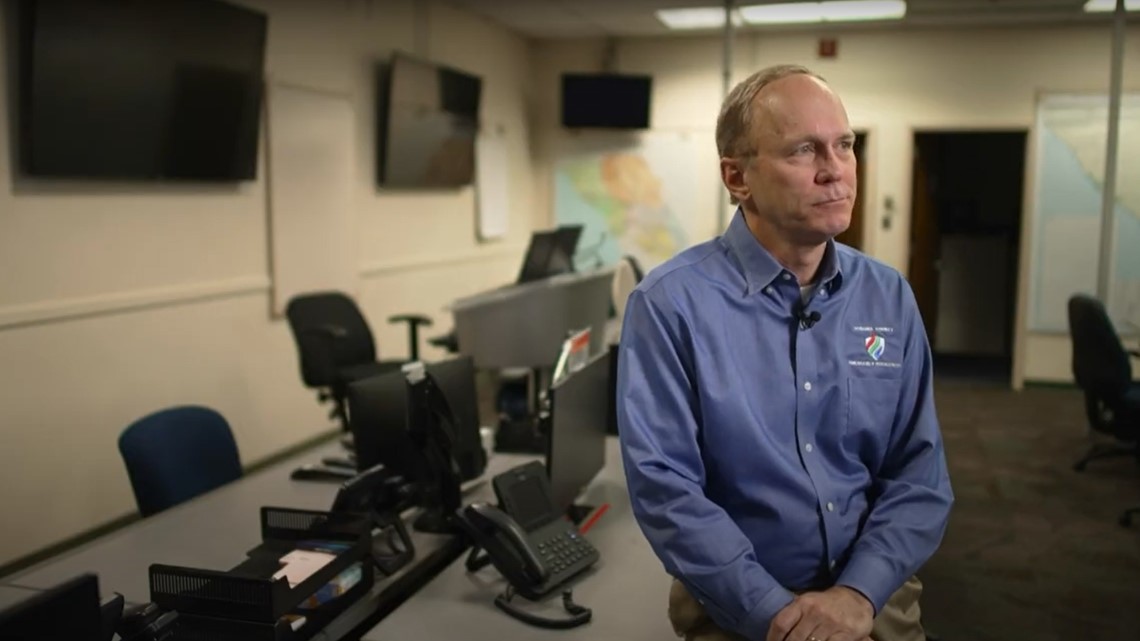
Chapter 5 Rebuilding trust
Godley’s success since the Tubbs Fire hasn’t gone unnoticed. People in the community are receptive to WEA alerts because they’re used to seeing them, he said.
“We've been very fortunate by having a community that's ready,” he said. “That's very important. They are aware now that there are hazards and threats in the county that they need to be ready for, as individuals, as families, as neighbors.”

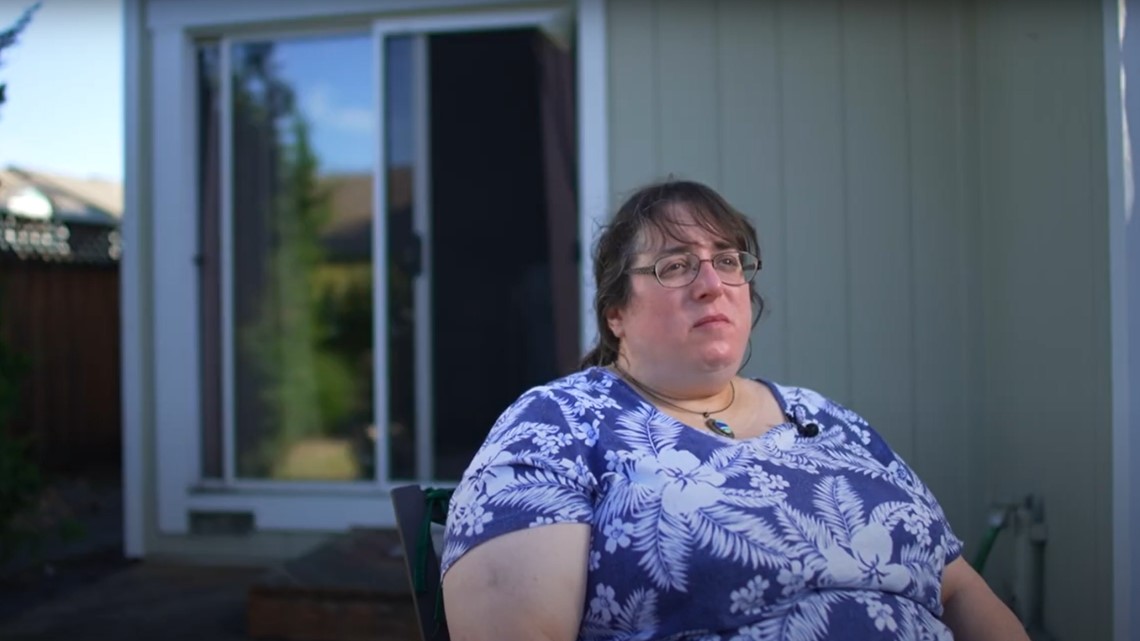
Tunis, who lost faith in her county after her mother’s death, said she has trust again.
“What happened here in Sonoma County, they got the message,” she said. “They need to over-alert. Over-alert. Because why risk one single life when you have the technology to let people know what’s going on?”
Tunis testified in favor of a bill passed in California that sets an alerting standard for all counties and provides resources to local governments to make sure their alert systems operate the way they should.
“The one thing about our tragedy is that you hope it would prevent others,” she said. “And when that doesn’t happen, when people don’t learn from the mistakes of other counties, other fire zones, it makes me just furious.”
Jane Fuller, who lost her home in the Coal Creek Ranch neighborhood in Louisville, learned a lesson from Sonoma County, too.
Years before the Marshall Fire, she vacationed in Sonoma County with her sisters, who were visiting from the United Kingdom. All three of their phones received a Wireless Emergency Alert about a fire burning nearby.
“Hours before the [Marshall Fire], we’re looking at our phone – that’s what I was expecting,” she said. “That’s what I was waiting for … a notification like the one I had in California.
“It makes me angry that that system wasn’t set up in a state where there are fires all the time,” she said. “In a county where there are fires all the time.”

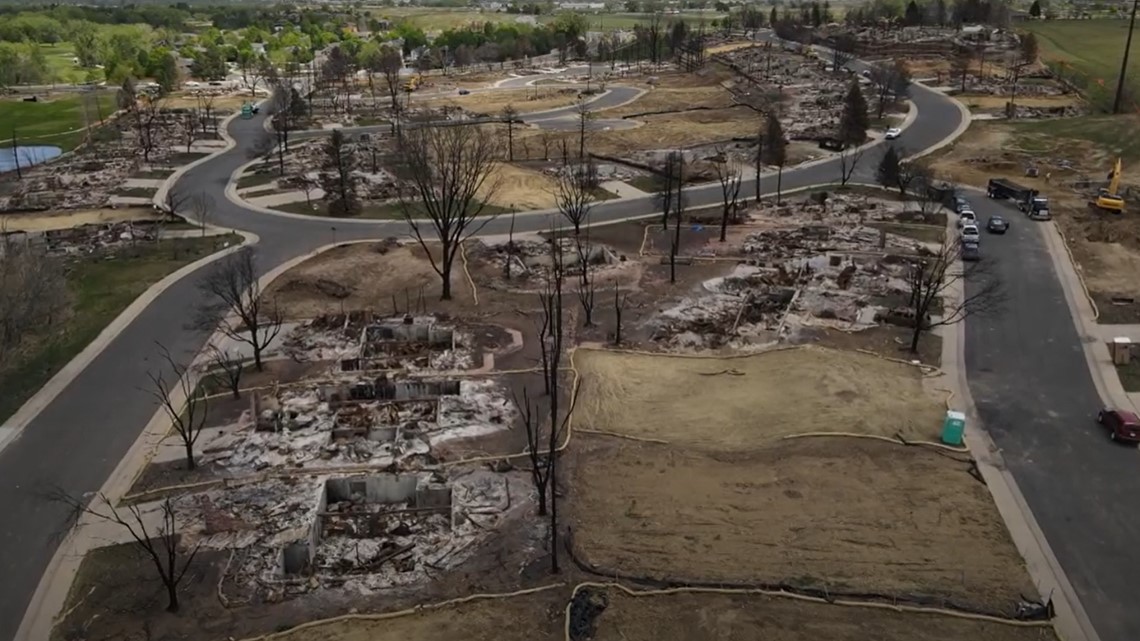
Boulder County has since finished the setup of its WEA system and has sent alerts for fires at least twice.
“We’ve gotten better since this fire,” Chard said. “We’ve implemented the system. We’ve used it already.”
Through the course of sending those WEAs, Boulder has had some problems. A WEA intended for a neighborhood in Boulder might also show up on phones from Berthoud to Arvada to Brighton to Nederland.
“We can’t somehow get that nailed down, so there needs to be some improvements to that system,” Chard said.
In Sonoma County, Godley’s team experienced the same obstacles. Less than a year after the Tubbs Fire, the county ran a test of its WEA system, which revealed a quirk of the system.
“We found that when we were delivering the tests into different locations – urban, rural, small town – that people with different carriers were having different experiences,” Godley said. “We thought, if a person with an AT&T phone is standing next to somebody with Sprint or Verizon, they're all going to get the same message in the same format at the same time. And that was not the case.”
Godley and his team worked with cellphone carriers and the federal government to get all providers operating in a similar way, but there are still discrepancies based on where cell towers are located and the age of people’s cellphones, he said.
The Federal Communications Commission (FCC) recently asked for feedback from emergency managers and the telecommunications industry on the WEA system and potential improvements. A group of agencies in the Denver metro area, including Boulder County’s Office of Emergency Management, submitted a comment to the FCC in June.
The group suggested changes to allow phones to receive updates to their WEA capabilities, improvements to the IPAWS mapping system and the development of a feedback mechanism so emergency managers can see how many people received an alert – something that’s not possible within the current system.
“Literally millions of lives depend on the technologies here,” Godley said. “We need to make sure these systems can perform at that public safety standard, where people have the same confidence that they'll get those warnings as they would if they had to call 911.”
In the meantime, Chard said his county will work within the constraints of the system and utilize more tools in future fires.
“We learn from every disaster,” Chard said. “That makes us more resilient and better positioned to handle the next thing that’s coming down. God forbid we have anything on the scale of Marshall, but I feel better about where we are today than where we were before.”
> Video below: 9NEWS reporters Steve Staeger and Chris Vanderveen talk about this story and why it matters that thousands of people didn't get Marshall Fire evacuation alerts:
SUGGESTED VIDEOS: 9NEWS Originals


